

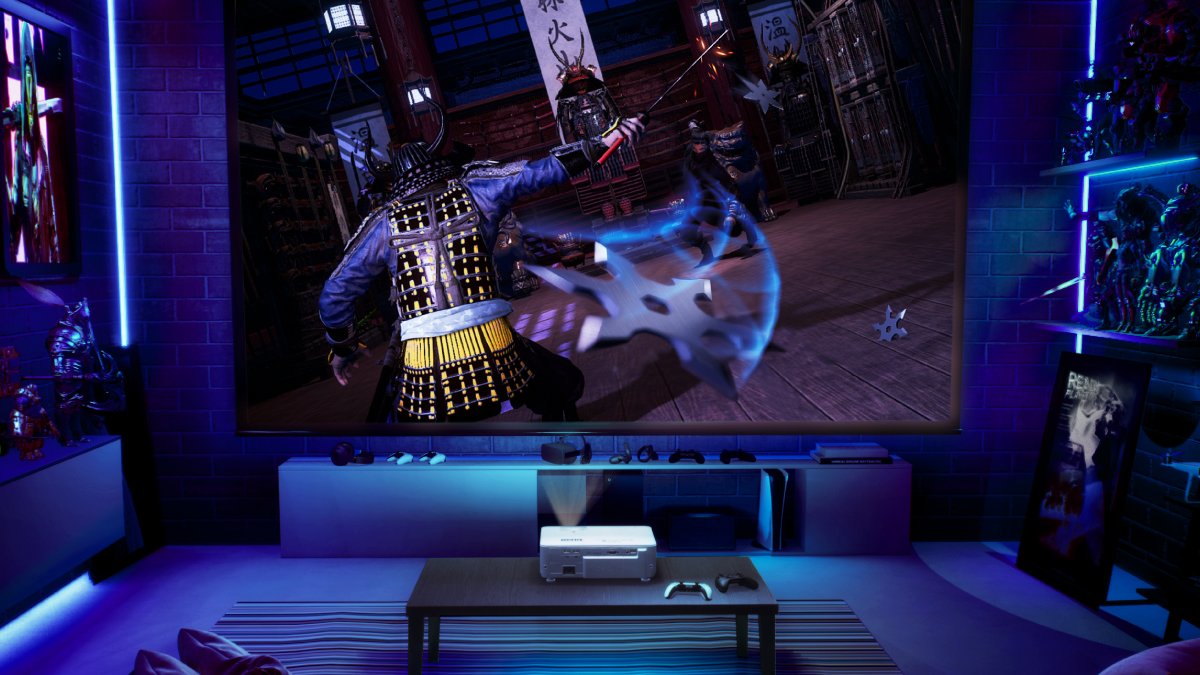
Once you’ve made the decision to either build a dedicated gaming cave/room or take your current room to the next level with a 100+ inch screen gaming projector, there will be various things you will need to plan for to make sure that you choose the right projector as well as ensure that the entire project gets up and running without a hitch.
Read through the following sections which will help guide you through each of these kinds of considerations so that you can comfortably realize your dream of a personal gaming cave:
•Making Sense of Your Video Room and its Space
Since rooms come in all shapes and sizes and aren’t always perfectly symmetrical, the first thing you have to do when you’ve decided to switch to a gaming projector is to evaluate which of the walls you will be projecting on. This means that you will have to find out whether the wall will fit the screen size you want.
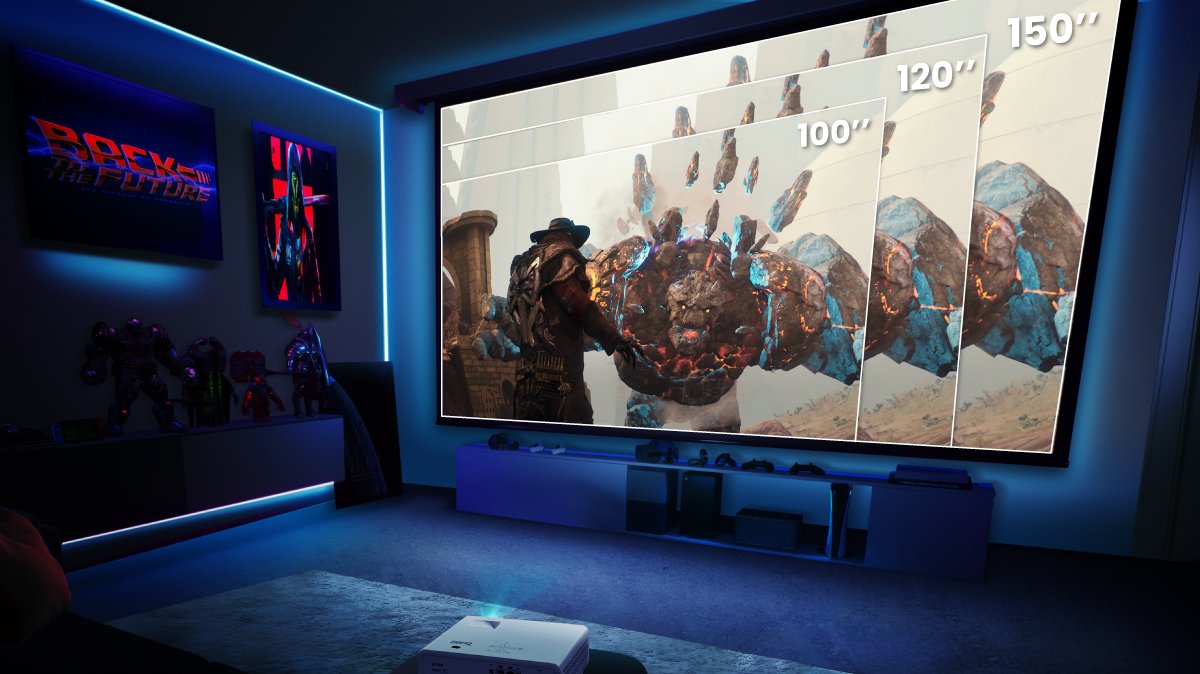
As a general rule, if you want a 100-inch screen you will need a wall with a width of at least 221 centimeters (roughly 87 inches), while a 120-inch screen will require a width of 265 centimeters (about 105 inches) or more.
Furthermore, to ensure that the wall is suitable to use, you’ll have to check to see if the wall is able to install a projection screen (if you plan on using one), as well as ensure that the wall itself is as close to a smooth surface as possible (no protruding outlets, hardware, etc.).
1.First, you will need to keep in mind the fact that the size of the projected image will affect the brightness of the image, therefore if you plan on having a larger screen you should look for a brighter projector.
After you’ve finished examining the aspects related to your room, the next step will be to decide the projection method, i.e. where the projector and console will be placed/installed in relation to the screen. This choice, when coupled with the screen size described earlier, will help you further pinpoint the right projector by focusing on the projector’s throw ratio.
Throw ratio is the value that describes the size of an image a projector can project from a certain distance, and is calculated by dividing the projection distance (the throw) by the screen width.
For most gaming projectors, there are three basic projection methods: front projection, side projection, and ceiling projection.
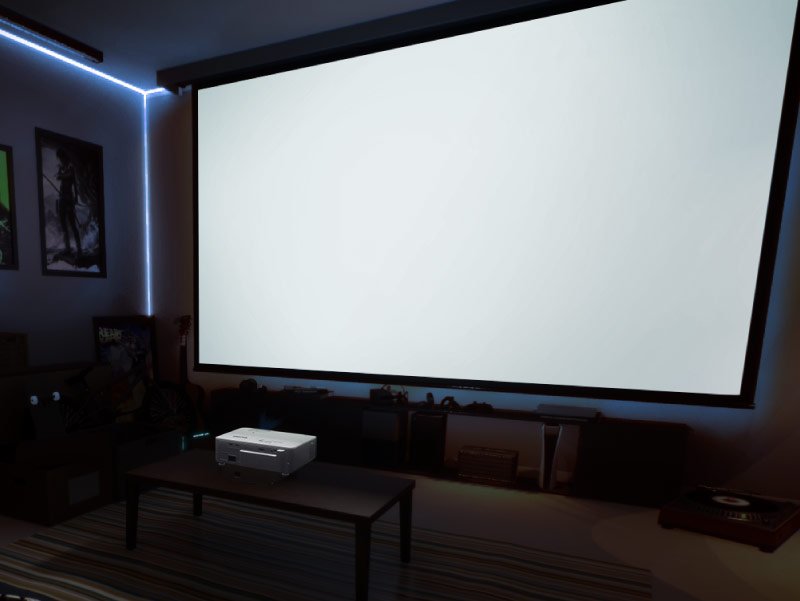
Front Projection
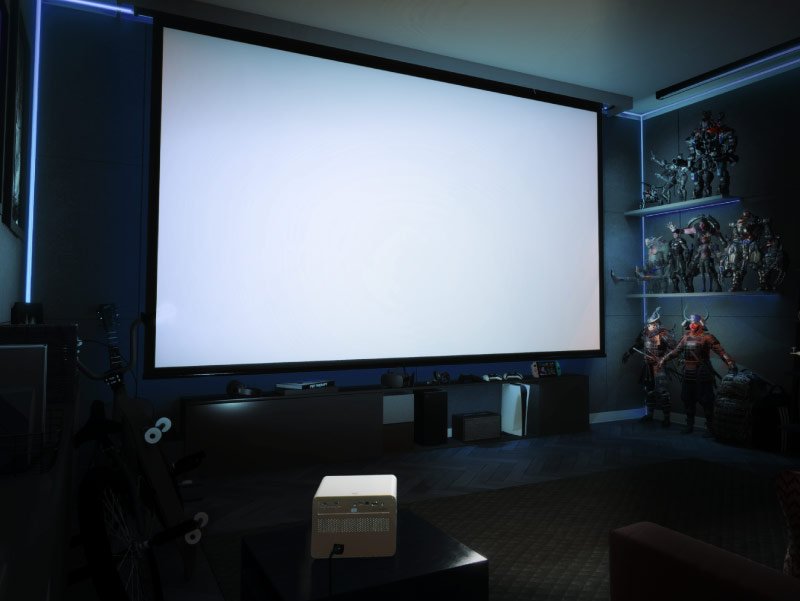
Side Projection

Ceiling Projection
The following sections describe some of the different options for each projection method and the corresponding throw ratio that is suitable for a projector under such conditions.
| Front Projection | Side Projection | Ceiling Projection | |
Input Lag | Front Projection Lowest | Side Projection Slightly Higher | Ceiling Projection Lowest |
Additional Installation | Front Projection No | Side Projection No | Ceiling Projection Yes |
Resolution | Front Projection Highest | Side Projection Slightly Lower | Ceiling Projection Highest |
Usability / Convenience | Front Projection Anytime the projector is stored after use, image adjustments will need to be re-done when the projector is used again. | Side Projection Anytime the projector is stored after use, image adjustments will need to be re-done when the projector is used again. | Ceiling Projection No additional steps needed after installation. |
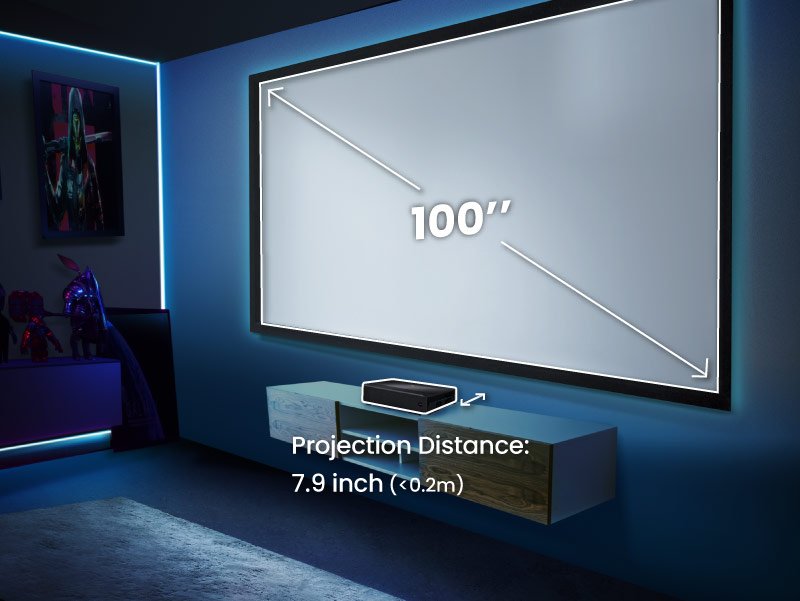
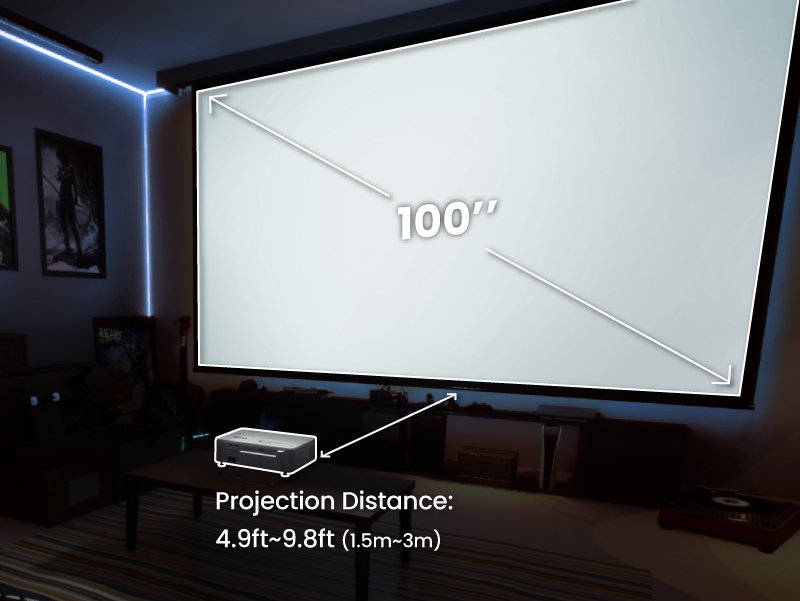
If you’re looking to front project from a TV stand placed up against your designated wall, the best option is to look for an Ultra Short Throw TV projector. If you plan on placing the projector on a coffee table in front of the screen, measure the distance from the projector’s most likely position to the wall and then calculate the corresponding throw ratio based on your desired screen size. This will be the throw-ratio value you should look for in a projector.

If side projection is your best option, your first concern regarding a projector is to check whether the projector supports side projection with features that help correct warped images due to off-center projection, such as 3D Keystone correction and Corner Fit. Once you’ve made sure a projector includes these features the next step is to calculate the throw ratio in the same way described above.
One thing to note about side projection, is that the image correction features necessary for side projection may increase the projector’s input lag, which could be a concern for some gamers. Since image processing is required for the keystone function, input lag will be slightly longer* but not affecting the smoothness in games when the keystone is enabled.
For ceiling projection, beyond the obvious step of ensuring that you’re able to install a projector on your ceiling, you’re also going to have to take into consideration how to route the cables associated with the projector in a way that both facilitates operation as well as aligns with your aesthetic preferences for the room. Once those two issues are settled you can calculate the throw ratio in the same way as the methods above.

Have concern about installation? Learn more from the following information:
How to Create a Big Screen Cinema in Your Small Apartment
BenQ Projector Calculator
Choosing the right projection screen (or whether to use one at all) is mainly about personal preference. Whereas previous sections provided concrete calculations and specs to guide you, the choice of a projection screen is based on what type of installation method they employ along with a weighing of the pros and cons for each type. Below is a basic breakdown of the various projection screen options.
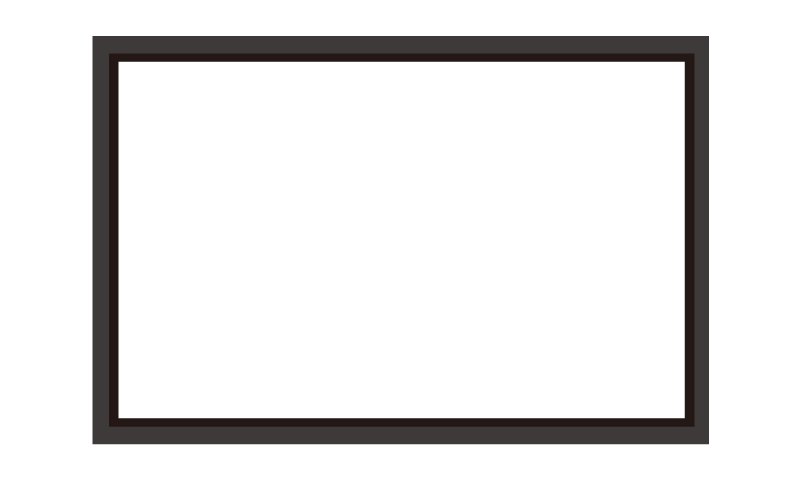
Fixed Frame Screen
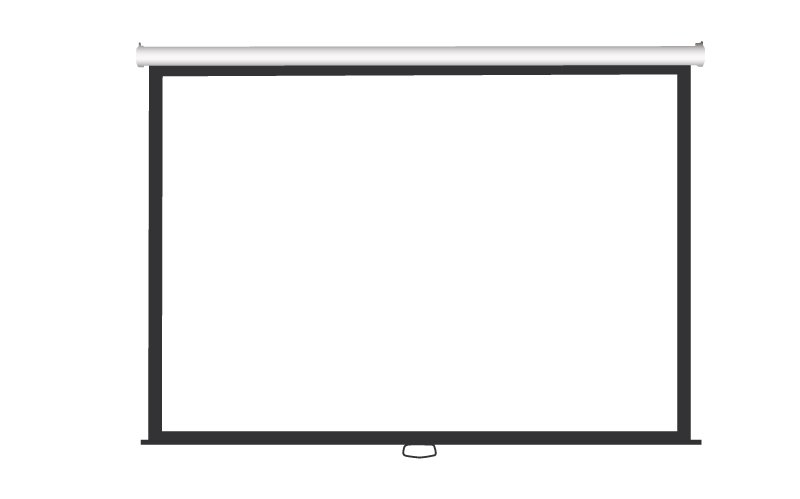
Ceiling (Pull-Down) Screen
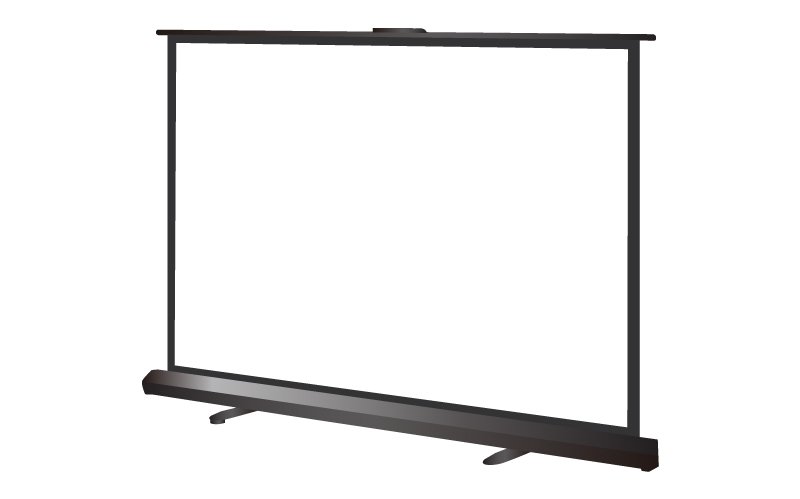
Floor Rising Screen
White Wall (No Screen) |
Fixed Frame Screens-Basic | Fixed Frame Screens-Light Rejecting | Ceiling (Pull-Down) Screens-Manual | Ceiling (Pull-Down) Screens-Electric | Floor Rising Screens-Manual | Floor Rising Screens-Electric | |
Effectiveness | White Wall (No Screen) Compared with the picture projected on the screen, the picture quality is not so good | Fixed Frame Screens-Basic Best image quality and flattest image surface; Suitable for projectors with any throw ratios | Fixed Frame Screens-Light Rejecting Suitable for dark rooms and/or for ultra-short throw projectors | Ceiling (Pull-Down) Screens-Manual May cause slight distortions with ultra-short throw projectors at a level greater than floor rising screens | Ceiling (Pull-Down) Screens-Electric May cause slight distortions with ultra-short throw projectors at a level greater than floor rising screens | Floor Rising Screens-Manual May cause slight distortions with ultra-short throw projectors | Floor Rising Screens-Electric May cause slight distortions with ultra-short throw projectors |
Installation Method | White Wall (No Screen) No additional installation needed; Needs a clean wall | Fixed Frame Screens-Basic Additional installation needed; Needs a clean wall | Fixed Frame Screens-Light Rejecting Additional installation needed; Needs a clean wall | Ceiling (Pull-Down) Screens-Manual Additional installation needed | Ceiling (Pull-Down) Screens-Electric Additional installation needed; Needs a power supply | Floor Rising Screens-Manual No additional installation needed | Floor Rising Screens-Electric No additional installation needed; Needs a power supply |
Price | White Wall (No Screen) No additional costs | Fixed Frame Screens-Basic | Fixed Frame Screens-Light Rejecting More expensive compared to manual one | Ceiling (Pull-Down) Screens-Manual | Ceiling (Pull-Down) Screens-Electric More expensive compared to manual one | Floor Rising Screens-Manual | Floor Rising Screens-Electric More expensive compared to manual one |
To decide what type of projector is most compatible with your console type, including insights into specs such as input lag, resolution, frame rate, eARC, and others, you can check our more detailed articles in the links below:
From Refresh Rate to Brightness: Things to Look For in a Gaming Projector
{{title}}
We will notify you when we have more.
We will send you an email once the product become available.Your email will not be shared with anyone else.
Sorry, our store is currently down for maintenance.We should be back shortly. Thank you for your patience!
